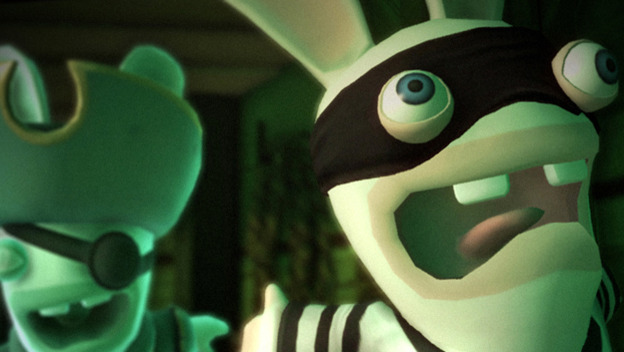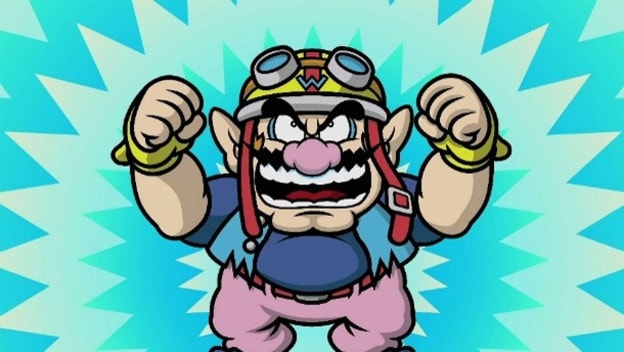In gaming’s younger (though not really in its youngest) years, the mini-game was a neat bonus, a diversion intended to reward players and give them a break from the pressures of the base gameplay. Some, like the famous car destruction stage in Street Fighter II, used the same core mechanics as the title in question; while others, as with the card matching in Super Mario Bros. 3, were more about providing something different to break up potential monotony.
During the CD era, mini-games appeared prominently as a means by which to cover a game’s long load times. Namco was particularly famous for this, entertaining players of certain entries in their Ridge Racer and Tekken series with gems from the company’s expansive repertoire of arcade classics.
As time went on, and the complexity of games continued to increase, mini-games began to work their way into the overall larger experiences in ways that affected the actual core gameplay. Sandbox games, in particular, or even just those with a grand-scale Overworld to explore, tended to make mini-games freely available to players. Final Fantasy VII had the Chocobo Races, the Coliseum, and a low-complexity RTS. Grand Theft Auto: San Andreas had a slew of different activities the player could engage in, all of which could either earn the player money or in some way alter CJ’s body composition.
It was also in this period that the Mario Party games were unleashed, in which the primary entertainment value of the game was derived from its diverse slew of mini-games, each providing a brief, bite-sized chunk of gameplay. The imitators were numerous, but Mario Party as a series remains to this day, and the structure of it hasn’t changed all that much. There’s a new entry planned for the 3DS later this year.
These days, games can be anything from a simplistic platformer to a full-blown cinematic experience, and the mini-game continues to thrive in many of its natural climates. It’s the highlight of the Saints Row games, a constant companion through Grand Theft Auto and Red Dead Redemption, and it’s often present in popular MMOs. World of Warcraft introduced a monster-battling game-within-a-game in its latest expansion.
The increased breadth of the gaming palate, though, has created an environment in which mini-games that destroy pacing and suck the fun out of a game are increasingly prevalent. You’re all familiar with the type: You’re playing Final Fantasy VII and you’ve just made good your escape from Shinra HQ, when, suddenly, you’re expected to move Cloud about on a motorcycle, trying to take down aggressive bikes going after your pals’ truck. You’re Ryo Hazuki, hero of Shenmue, focusing his thirst for vengeance and martial prowess on… stacking crates with a forklift for days on end.
This type of mini-game, often mandatory and always underwhelming, was most likely designed with a specific purpose in mind (acting as a tutorial, showing off a new system, etc.). The problem is that they don’t really work because they tend to be either frustrating, boring, or a hideous amalgam of the two. Mini-games are cool when they’re optional, but they are at their absolute best when they’re fun. Stacking crates isn’t fun.
Neither is punching buttons rhythmically as the characters plod across the screen. Rhythm mini-games, outside of titles designed around them like Brütal Legend, need to die off immediately. The karaoke bit in Sleeping Dogs is absolutely pathetic, bordering on embarrassing.
The single worst offender in recent memory, though, is Injustice: Gods Among Us. Its story mode is incredibly well thought out for a fighting game, designed using the same structure as Mortal Kombat vs. DC Universe and the Mortal Kombat reboot. It’s a tightly crafted experience that shifts seamlessly between gameplay and cut scenes, cycling between characters as the game goes on. Occasionally, though, a wrinkle pops up in the form of a non-standard encounter.
Mostly more complex than QTEs, they just barely qualify as mini-games. They typically involve aiming at a character or object on screen and shooting it down in some manner. It’s dull, mindless, generally fairly easy, and serves to shatter the pacing of the game rather than calm it, bringing it to a grinding halt and taking one completely out of the fighting game groove.

Luckily, Injustice also provides a potential solution for its own problem. The S.T.A.R. Labs mode involves a character squaring off against a foe or foes under special conditions, much as in Mortal Kombat’s Challenge Tower. The conditions twist the basic experience of the game enough that they end up more like puzzles than standard brawling, which provides a refreshing divergence from the potentially monotonous action.
And, really, that’s what a mini-game is supposed to do. It’s supposed to serve as a break from the action, or a means to hide a technical foible of the game. It’s not meant to be thrown in there so that cinematic moments are “interactive,” because that’s the very thing everyone hates about QTEs. The lesson here is this: If you want to inject your mini-game into the core game itself, do it in a way that shakes up the game rather than brings it to a crashing halt. It’s outright perplexing that Injustice, which did incredibly well with its challenge mode, dropped the ball on this one. May other games learn from that mistake.
